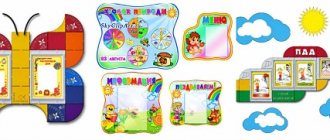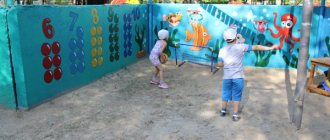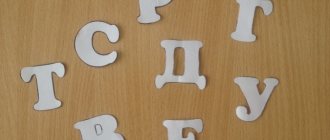Design of a national corner in the middle group
Irina MALINOVSKAYA
Design of a national corner in the middle group
An important component of the educational environment in the group is the national corner . It has the function of instilling in children patriotic feelings, love for their native land and pride in it. Its content will make it possible to organize the educational process in a group a way as to form in a simple and relaxed form in children involvement in the modern events of their native country, initial ideas about national cultural traditions, about their small Motherland, national and state holidays. The national corner contributes to the formation of ideas about how people live in the republic, its geographical location, symbols of the state, attractions of their hometown, capital, traditional crafts, arts and crafts, and leading industrial enterprises. Creating an emphasis on the cultural features of the native land is the main thing in organizing a national corner . The nuances of its design depend on the age of the children and the creative approach of the teacher.
We live in the capital of the Republic of Belarus, the hero city of Minsk, so the main place in the national corner of our group is occupied by the symbols of Belarus and its capital: the flag, the coat of arms.
To develop knowledge about the geography of the native country, in the corner there is a geographical map of Belarus, a panel “Relief map of the Republic of Belarus”
.
We placed dolls in national Belarusian costumes in the corner
With the help of the pupils' parents, they collected a small collection of Belarusian arts and crafts: Belarusian toys (clay, wood, straw, woven and embroidered products, ceramics, products made from straw, flax, wicker, wood.
The central place in our collection is occupied by the straw “spider”
, donated by a folk artist.
Straw "spider"
- This is one of the most ancient creations made from straw.
Since ancient times, the Belarusian people believed in the miraculous power of the “spider”
.
A straw “spider”
suspended from the ceiling is not only a product of a folk craftsman, a decoration for our
group , but also a talisman.
For independent activities of children, albums on various topics are decorated in the corner In the album “Our Minsk”
collected colorful photographs of our beloved city - the capital of our country.
To the album “We are factory workers”
included illustrations about the industrial enterprises of the Zavodsky district in which we live.
Album “Belarusian patterns”
introduces pupils to the peculiarities
of national embroidery and weaving.
Album “Memorable places of Minsk”
tells the children about the most dear places for Minsk residents in the capital of our Motherland.
To the album “Symbols of our Radzima”
images of the coats of arms of the most ancient cities of our republic are included.
To introduce children to folk musical instruments, we have designed the album “Arkestar of Belarusian Folk Instruments”
.
Album “May Radzima – Belarus”
tells preschoolers about the territorial division of the republic, about its regional centers.
In the album “Our Museum”
collected interesting historical information about household items and clothing of the Belarusian people.
The corner contains educational and encyclopedic literature for viewing,
There are portraits of Belarusian artists, composers, writers.
To consolidate children’s knowledge and ideas about their native country, we collected a card index of didactic games to familiarize themselves with the decorative and applied arts of Belarus, and produced didactic games “Travel to Minsk”
(in Belarusian language
“Padarozhzha na Minsku”
,
“Traveling around Belarus”
(in Belarusian language
“Vandruem na Belarus”
,
“What is it made of?”)
.
The national corner of the group is our pride!
About culture, defenders of the Fatherland and planet Earth
In addition to local history information, other topics and areas contribute to patriotic education.
If the necessary material is available, information about how the culture of our people was born is posted in the patriotic corner. These could be thematic exhibitions “How did people live in Rus'?”, “What do ancient things tell about?”, “From the history of Russian folk costume”, “How did people walk and have fun?”, “Folk calendar” and others.
Information about the defenders of the Fatherland can also replenish the patriotic corner in kindergarten. The design (photo below) of exhibitions about the heroes of the Russian land, the Great Patriotic War and the Russian Army can arouse the interest of boys and instill in them a desire to become a defender of their homeland.
The global task of patriotic education is to form in children the concept that planet Earth is our common home, and everyone who lives on it should live in peace. Children need to be introduced to the living conditions of people in other parts of the planet, their customs and traditions.
If teachers and parents are interested in educating a young citizen, then the result will not be long in coming, and the corner of patriotic education will help in this.
visual aid “A Corner of the Native Land”
| Author: Pomaskina Natalia Alexandrovna, teacher MADOU "Combined kindergarten No. 46" Tobolsk. |
visual aid “Native Corner” (a corner for observing changes in nature)
Brief summary:
Age category: 3-7 years.
Goal : to systematize children’s knowledge about the nature of their native land at different times of the year.
Tasks :
— to form ideas about seasonal changes in nature, about the seasons;
- develop curiosity and observation, the ability to see the beauty and uniqueness of nature at different times of the year;
— consolidate knowledge about trees, birds and animals of their native land;
- expand your vocabulary, develop coherent speech when composing descriptive stories about the weather, the time of year;
- develop visual arts skills, fine motor skills, fantasy and imagination when decorating a corner, making sketches about changes in nature;
- cultivate love for the native land.
Working method:
There are various calendars and albums for sketching daily weather observations. The children and I created a corner of our native nature in the group, where we note various seasonal changes in nature. This form of work develops in children knowledge about the gradual, consistent change of foliage on trees, its rate of fall, the arrival and life of birds in the forest.
For example: in the fall, children found beautiful golden birch branches and placed them in a corner, after a while - a branch of bright variegated rowan, then aspen, bird cherry, oak, and maple appeared. The children admired the corner they had created with their own hands. Notice that the oak remains green. Then, also gradually, the children noted from which tree the leaves began to fall off, and observed leaf fall not only on the street, but also in the corner of the group. The children found out that every tree has seeds. They made puddles out of paper, glued leaves to them with tape, and they got frozen leaves in puddles. Gradually, the children sprinkled the entire corner with snow (cotton wool), and it turned out to be late autumn.
In winter, we made birds (tits, bullfinches) and placed them on a rowan tree (there were no leaves, but the berries remained). In our corner, we noted all the changes that the children talked about (footprints, ski tracks).
Spring came (change of pictures), the snow melted (the cotton wool was removed), the children found and brought a blossoming willow twig to the corner, drew streams, dark paths, cut out puddles, rooks.
With the changes in the nature of our native land in the spring, interesting work continues in our corner. Spring dragged on this year, snow fell again and it also appeared in our corner. What will our calendar look like in the summer? Children will decide this based on their observations about the weather.
Daily work with this visual aid develops in children an interest in nature, a desire to notice something unusual in nature and tell friends in the group about it, and make changes to our calendar themselves. In addition, this manual can be used to form mathematical concepts, to develop coherent speech, to develop artistic creativity skills, because everyone wants to create their own small album of observations of the nature of their native land.
1 vote was given for this work.
Voting ended on April 13, 2014 at 11:00 p.m. Thanks everyone for participating!
Share





